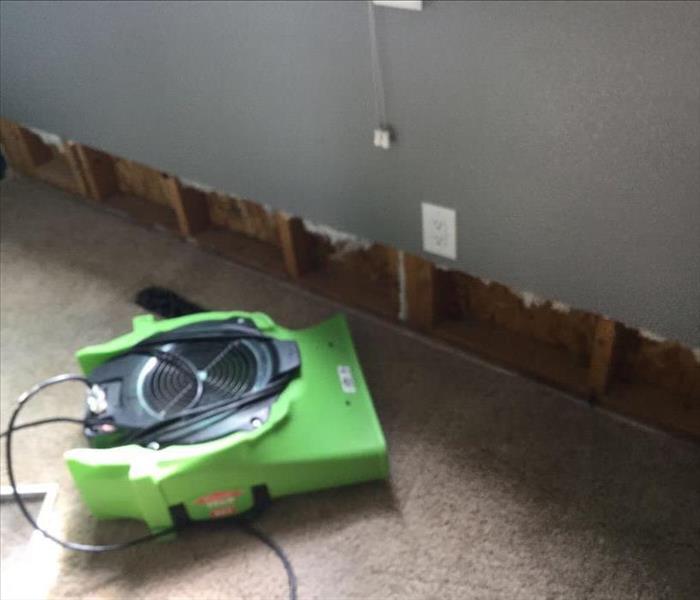Building Material Saturation in Storm Events and Natural Disasters
3/29/2018 (Permalink)
By: Christian Isaacson
Natural disasters can be one of the most unpredictable and impactful weather events that a homeowner or tenant ever face. Often times natural disasters such as hurricanes, deep freezes, and flooding can strike with little to no warning. With this in mind, we must remember that people affected by these disasters typically have little to no time to plan for these events resulting in little to no preventative measures being taken. To put this into perspective, let us use a flood as an example. In a typical, non-storm event water loss you will often have smaller amounts of water affecting different building materials in your home or business. Typically when facing these smaller scale water damages you will find lower saturation levels being retained because the excess moisture has been cleaned up using a variety of methods. This is especially important to note as one of the biggest differences in standard water losses and storm water losses is the amount of time that the water is left to dwell on the building materials.
Whether you are facing a fire damage, water damage, or both, it is important to keep in mind that building materials most homes and business’ are built of are in fact porous materials. Regardless of the difference in porosity, almost all building materials can soak up a substantial amount of water especially if they are left unattended for extended periods of time as is the case with hurricane and other natural disaster evacuations.
So you may be asking yourself, what does this extended dwell time on building materials mean to the restoration of a home after the disaster has passed? Well the short answer is that more dwell time means that more dry time will be needed to restore the moisture levels back to normal. But there is still one more major step to restoring your home or business after a natural disaster and that is the removal of all of those building materials that cannot be dried efficiently. This means that some or most of the cosmetic building materials affected such as drywall will need to be removed as the structural integrity of such materials is often compromised.





 24/7 Emergency Service
24/7 Emergency Service
